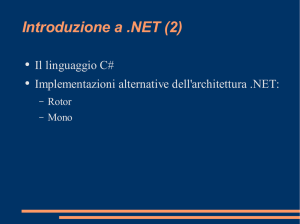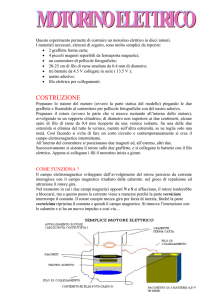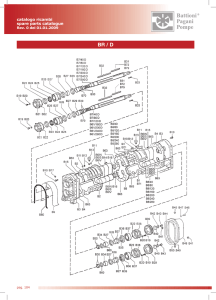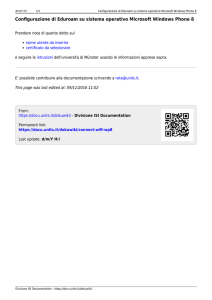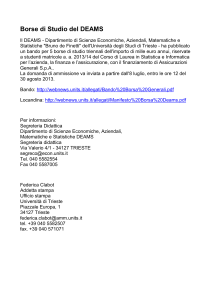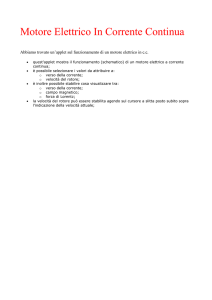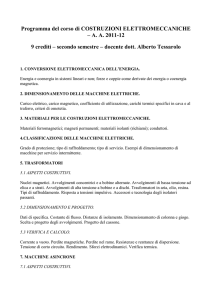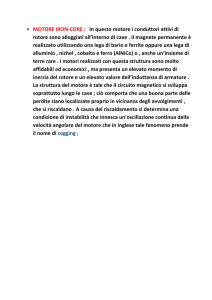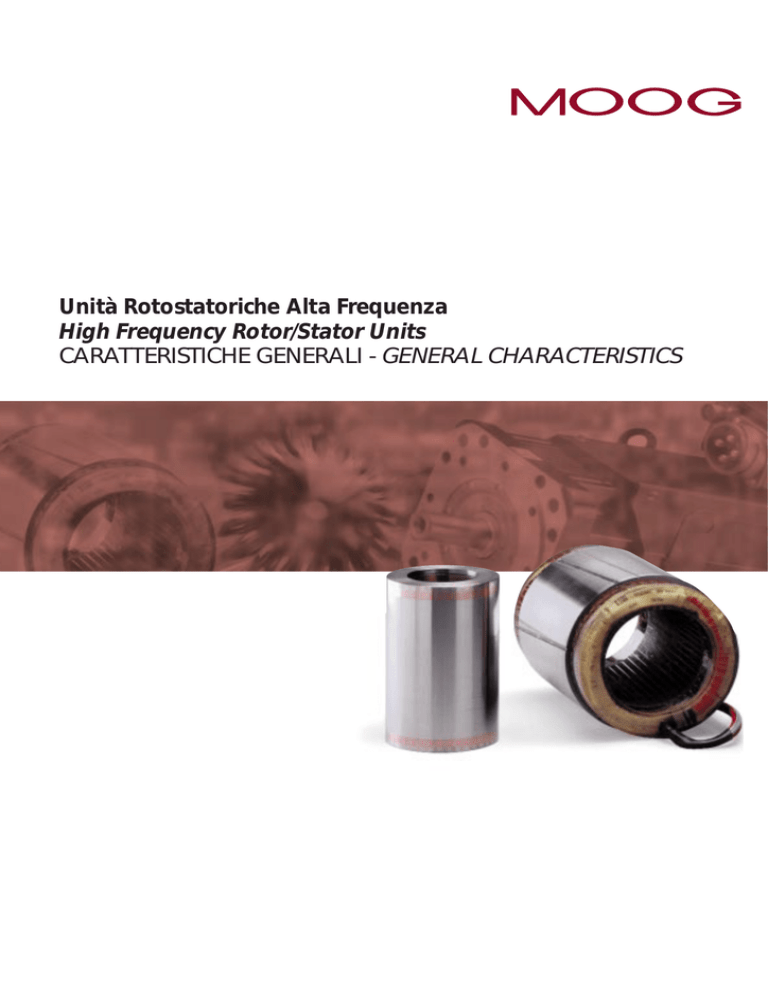
Unità Rotostatoriche Alta Frequenza
High Frequency Rotor/Stator Units
CARATTERISTICHE GENERALI - GENERAL CHARACTERISTICS
Unità Rotostatoriche Alta Frequenza
High Frequency Rotor/Stator Units
Introduction
Our high frequency rotor/stator units are designed
and manufactured in such a way as to provide the
most flexible approach to providing a high speed
electric spindle motor for our clients who integrate
them into their specialist grinding, milling, drilling and
router machines.
The entire H.F. family delivers the highest available
specific motor power / exceptional reliability package
together with tolerance to high speeds, overloads
and hostile environments.
The annexed data sheets provide the electrical and
mechanical characteristics of our products thus
facilitating a rational choice of each unit.
Introduzione
Le unità rotostatoriche a alta frequenza sono
progettate e costruite in modo da poter essere
integrate negli elettromandrini per fresatura,
rettifica, foratura ecc., fabbricati dai nostri Clienti.
Disponibili in un’ampia gamma, sono
caratterizzate da elevatissima potenza specifica,
eccezionale affidabilità, ottima resistenza alle alte
velocità, ai sovraccarichi e agli ambienti ostili.
Le schede tecniche allegate forniscono, nel
dettaglio, le caratteristiche elettriche e
meccaniche dei nostri prodotti, permettendo una
razionale scelta delle unità.
Caratteristiche generali
Dal punto di vista dell’applicazione e delle
specifiche caratteristiche le unità possono essere
suddivise in due categorie principali: unità per
rettifica e unità per fresatura.
General features
From the point of view of the application and its
particular features, the units can be divided in two
main types: rotor/stator units for grinding and
rotor/stator units for milling.
Unità rotostatoriche per rettifica
Identificate come versione GHD, lavorano in un
esteso campo di funzionamento a coppia
costante, fino a un elevatissimo numero di giri,
grazie all’impiego di lamierini magnetici dello
spessore di 0,18 mm a bassissime perdite e, per
particolari potenze specifiche, barre rotoriche in
argento. Le testate dei rotori sono realizzate in
speciali leghe di rame e la struttura, basata su
lavorazioni meccaniche di alta precisione, è
rinforzata da una seconda testata in acciaio.
Queste unità possono raggiungere velocità fino a
260.000 r/min con velocità periferiche del rotore
fino a 250 m/sec; gli statori, incapsulati con
processo centrifugo, sono avvolti a 2 o 4 poli in
una gamma di diametri da 52 mm a 125 mm.
Rotor/stator units for grinding
Version GHD. These units deliver constant torque for
a wide range of speeds (up to very high maximum
speed values) by using very low loss laminations
(thickness of 0,18 mm). The rotor squirrel cage is
manufactured from copper bars, but when a
particularly high specific power value is requested,
silver bars are utilised.
Squirrel cage end rings are manufactured from
special copper alloys and the rotor structure is also
reinforced by a second couple of steel end rings.
Each single component is obtained by following high
precision machining cycles and quality tests.
These units can reach absolute speeds up to
260,000 rpm with peripheral velocity of 250 m/s.
Stators (encapsulated by a special centrifugal
process) are wound for 2 and 4 poles with external
diameters in the range 52 – 125 mm.
Unità rotostatoriche per fresatura
Identificate come versione D lavorano,
tipicamente, in coppia costante fino al ginocchio di
potenza (velocità nominale) e quindi potenza
costante fino alla velocità massima.
Le unità, realizzate con lamierini a basse perdite e
materiali accuratamente selezionati, rispondono
alle caratteristiche richieste dall’applicazione,
ovvero alta sovraccaricabilità fino alla velocità
nominale in operazioni di sgrossatura e potenza
costante, in zona d’indebolimento del campo, per
le applicazioni di finitura a alta velocità.
Possono raggiungere velocità di oltre 50.000 r/min
con velocità periferiche del rotore fino a 170
m/sec; gli statori, incapsulati con processo
centrifugo, sono avvolti a 2, 4 o 6 poli in una
gamma di diametri da 90 mm a 270 mm.
Rotor/stator units for milling
Version D. These units deliver constant torque up to
the so-called “power knee” (corresponding to the
nominal value of speed) and, after this step, they
supply constant power up to the maximum speed.
Manufactured by using low losses lamination and
carefully selected materials, the units match the
typical requirements of milling: high possibility of
overload up to the nominal speed for rough
machining and then constant power, up to maximum
speed, for finishing. These units can reach speeds of
more than 50,000 rpm with rotor peripheral velocity
up to 170 m/s. Stators (encapsulated by a special
centrifugal process) are wound for 2,4 and 6 poles
with external diameters in the range 90 – 270 mm.
1
La Progettazione
Product Design
Il progetto di tutte le nostre configurazioni
elettromagnetiche è eseguito dal nostro reparto
Ricerca & Sviluppo, presso lo stabilimento di
Casella, con i più avanzati strumenti di calcolo e di
simulazione, supportati da un’esperienza
ultratrentennale.
The design of all our electromagnetic configurations
is the result of the extensive experience of the
Vickers Casella Research & Development
department that was established in the 1960’s. Our
designs have been refined and improved over the
years by our continued use of the most advanced
calculation and simulation computer based software
tools.
Progettazione elettromagnetica
Ogni progetto è ottimizzato con un “Programma di
calcolo elettromagnetico agli elementi finiti” che
permette di ottimizzare le caratteristiche
elettromagnetiche in tutte le condizioni reali di
funzionamento; la figura 1 mostra la distribuzione
del flusso all’interno dell’insieme statore/rotore.
Un secondo programma, completato
internamente, permette di valutare le prestazioni
del motore in termini di tensione, potenza,
corrente, giri, sovraccaricabilità, perdite ecc.
calcolando inoltre tutte le grandezze del circuito
equivalente per la corretta impostazione dei
parametri necessari agli azionamenti a controllo
vettoriale.
Electromagnetic design
A “Finite Element Program” optimises the
electromagnetic characteristics in accordance with
real-world working conditions; fig. 1 shows the
internal distribution of the flux within the system
stator/rotor.
Another software tool developed by Casella,
evaluates the performances of the motor in terms of
voltage, power, current, speed, overloads, losses
etc. also calculating all the parameters of the
equivalent circuit and fundamental input data for
vectorial control drives.
Mechanic design
The “Finite Element Program” allows the precise
evaluation of both the mechanic stresses,
caused by centrifugal forces in the rotor laminations,
and of the correct interference fit for the rotor and
shaft sub-assemblies; fig. 2 shows the internal
distribution of stresses in the rotor. By using the
results from the program that calculates the minimum
value of the necessary interference for the rotor and
shaft assembly and those from the program that
calculates the spindle’s axis line critical bending
frequency, we can complete the mechanical design.
Progettazione meccanica
Il “Programma di calcolo meccanico agli elementi
finiti” consente di calcolare con precisione la
sollecitazione meccanica del lamierino rotore per
effetto della forza centrifuga e dell’interferenza
rotore / albero; la fig. 2 evidenzia la distribuzione
delle sollecitazioni all’interno del rotore.
Completano la progettazione meccanica il
“Programma di calcolo dell’interferenza minima
necessaria di calettamento rotore albero” e il
“Programma di calcolo della frequenza critica
flessionale della linea d’asse rotore/albero
mandrino”.
Evaluation testing
All the above mentioned calculation programs are
continuously updated and improved as a result of
continuous product evaluation and testing, from both
our Test Department and feedback from our Clients’
who carry out the final configuration of the electric
spindle.
Each rotor/stator unit family has to pass extensive
test regimes in our laboratory on dedicated test
benches. In particular, we have a 30 kW – 30,000 rpm
test bench which is dedicated to load testing of
electric spindles. Consequently, all the data stated in
our catalogues can be verified by correlation with
data from the above mentioned sources.
Caratterizzazione
Tutti i Programmi di calcolo indicati sono stati
affinati attraverso continue prove di validazione,
effettuate sia al nostro interno sia con i Clienti
nella configurazione finale dell’elettromandrino.
Ogni famiglia d’unità rotostatoriche è qualificata
da severi test nel nostro laboratorio prove che
dispone, fra gli altri, di un banco da 30kW a
30.000 r/min, particolarmente adatto per prove a
carico su elettromandrini.
I dati forniti nei nostri cataloghi sono, quindi,
diretta conseguenza delle caratterizzazioni
potenza/velocità eseguite nel nostro laboratorio.
Banco prova 30 kW
a 30.000 r/min
Test bench 30 kW
at 30,000 rpm
2
I Prodotti
Products
Le unità rotostatoriche sono tutte progettate e
fabbricate presso lo stabilimento di Casella; gli
stampi di tranciatura dei lamierini, eseguiti a
nostro disegno, sono interamente di nostra
proprietà.
We have complete control of every aspect of the
design and manufacture (using our specially
designed lamination punching tools) of all stator /
rotor units at our plant in Casella.
Stators
The lamination stack is assembled by using a
welding process named TIG (Tungsten Inert Gas).
The standard class F winding is supplied with triple
thermal protection PTC (100 or 130 °C) and with
ultra-flexible output cables usually 400 mm long.
However we are able to supply units to satisfy a
client’s particular request, for instance, utilisation of
different insulating materials with superior properties
to suit an arduous application / environment, different
thermal protection, different cable lenght.
Each stator is encapsulated in transparent epoxy
resin by following an exclusive centrifugal process
developed and improved at Casella. By this method,
the resin is forced to occupy all the voids within the
winding, increasing the characteristics of insulation
and giving an exceptional mechanic robustness to
the stator.
We take particular care to the best distribution of the
hanks of the winding and to reinforce the insulation
among the phases both in the end windings and in
the slots. These efforts are employed to minimise
any ageing phenomena typically caused by voltage
spikes generated by PWM type static converters.
Consequently, our stators can tolerate a dv/dt up to
1kV/microsecond. Encapsulation also increases the
heat capacity allowing a relevant extension of
overload times.
The electric characteristic and serial number rating
label for all stator units are embodied under the
transparent resin of the end winding near the output
cables; external diameters are turned to close size
tolerances when necessary and all units are supplied
with their test report.
Gli Statori
Il pacco di lamierino è assiemato con un
procedimento di saldatura denominato TIG
(Tungsten Inert Gas). L’avvolgimento standard, in
classe F, presenta una protezione termica tripla
tramite PTC a 100° o 130°C e cavi potenza, in
uscita, ultraflessibili, lunghi 400 mm. Su richiesta
sono disponibili altri tipi di protezioni termiche e
cavi di collegamento di lunghezza maggiore di
400 mm. Molti tra i materiali isolanti sono in classe
d’isolamento superiore per assicurare la massima
affidabilità nel tempo e sono, comunque, previste
esecuzioni speciali su richiesta dei Clienti.
Gli statori vengono incapsulati in resina epossidica
trasparente, con un esclusivo processo di
impregnazione centrifuga, sviluppato e messo a
punto a Casella, che forza la resina a riempire tutti
gli interstizi siti nell’avvolgimento, migliorando
l’isolamento e conferendo al pezzo un’eccezionale
protezione meccanica contro eventuali urti.
Un’attenzione particolarissima è posta alla
disposizione delle matasse di avvolgimento e al
rinforzo dell’isolamento tra le fasi in testata e in
cava, per minimizzare i fenomeni d’invecchiamento
tipicamente causati dai picchi di tensione, a
elevato gradiente, generati dai convertitori statici
di tipo PWM. I nostri statori sono così in grado di
sopportare un dV/dt fino a 1 kV/microsecondo.
Un altro beneficio indotto dalla tecnica di
incapsulamento è costituito dall’aumento della
capacità termica che consente un rilevante
allungamento dei tempi di sovraccarico.
La targa, con le caratteristiche elettriche e il
numero di serie, è posta sotto la resina della
testata lato uscita fili; gli statori, torniti quando
necessario sul diametro esterno, sono sempre
forniti accompagnati dal certificato di collaudo.
1
2
La distribuzione del flusso
all’interno dell’insieme
statore/rotore
La distribuzione delle
sollecitazioni all’interno del rotore
Flux internal distribution within
the system stator/rotor
Rotor internal stresses
distribution
3
Rotors
In accordance with the requested performance
requirements, we can manufacture the rotor squirrel
cage from either copper bars, aluminium die cast
rods or, for extreme requirements, silver bars.
The whole design of the magnetic rotor circuit and
the accurate sizing of the lamination’s slots assure a
very good balance of the squirrel cage and therefore
permits big rotor holes. This feature enables the
possibility of utilising output shafts with a large
external diameter, therefore increasing the stiffness
coefficient of the structure and, consequently, the
rotor critical speed values.
By using special production tools, the assembly
process of rotor stack / bars (Cu or Ag) ensures the
correct and precise inclination of the rotor bars, both
for electrical reasons and to ensure the mechanical
locking of the rotor bars in the lamination slots.
The rotor squirrel cage is closed by two end rings
manufactured from a special copper alloy and,
especially for high radial velocity, can be reinforced
by two additional steel end rings.
To ensure perfect repeatability and accuracy we use
an induction welding process to ensure our special
silver alloy, with a unique characteristic, fully
penetrates the end ring and bar junctions by capillary
action. Periodically, destructive tests are executed to
verify the correct disposition of the welding alloy
within the rotor. After axial facing and diameters
turning, the rotors are supplied with their test report.
I rotori
La gabbia di scoiattolo, a seconda delle
prestazioni richieste, può essere eseguita con
barre di rame, pressofusa in alluminio o, in casi
estremi, con barre d’argento. Il disegno del
circuito magnetico rotorico privilegia un ottimo
bilanciamento della gabbia di scoiattolo, grazie a
un’accurata disegnazione della cava rotorica che
permette di ottenere fori rotore di dimensioni
particolarmente grandi; ciò consente il
calettamento di alberi di grosso diametro e
conseguenti elevate velocità critiche dovute alla
rigidità della struttura.
Il processo d’assiemaggio pacco rotorico/barre Cu
o Ag, eseguito in appositi attrezzi di tenuta,
prevede l’inclinazione delle barre, precalcolata
con precisione, sia per motivi elettrici sia per
motivi di bloccaggio meccanico delle barre stesse
in cava; la gabbia, chiusa da due anelli di speciale
lega di rame a alta resistenza meccanica, è
spesso ulteriormente rinforzata dall’aggiunta di
due anelli in acciaio. La saldatura, effettuata con
saldatrice a induzione per assicurare un’assoluta
ripetitività del processo, utilizza una speciale lega
d’argento che garantisce la miglior profonda
penetrazione per capillarità della lega stessa;
periodicamente vengono eseguiti test distruttivi
per controllare la disposizione della lega all’interno
del rotore.
I rotori, sfacciati assialmente e torniti sul diametro
esterno e interno, sono sempre forniti
accompagnati dal certificato di collaudo.
Una fase del processo
di avvolgimento
A winding process step
4
Supporto Tecnico-Commerciale
Technical & Commercial Support
È nostra politica favorire, attraverso la nostra
organizzazione commerciale, un contatto diretto
tra i nostri progettisti e il personale tecnico dei
Clienti. Ciò permette un completo esame
congiunto delle caratteristiche richieste, portando
a una reale ottimizzazione del prodotto.
Our commercial organisation follows the policy to
encourage and improve the direct contact between
our designer and the technical staff at Clients’.
This fact permits a deep common analysis of all
requirements of the application taking to a
consequent real optimisation of the product.
Offriamo inoltre:
- assistenza in fase di progetto e di individuazione
della soluzione migliore
- assistenza sul calcolo dell’interferenza e
temperatura di riscaldo del rotore
- assistenza sul calcolo dei parametri per il
settaggio dei drives
- assistenza sul calcolo delle prestazioni per
servizio intermittente
- assistenza per la determinazione delle
prestazioni per condizioni di raffreddamento
diverso dallo standard indicato nelle schede
tecniche.
We continuously and constantly offer to our
customers:
- assistance during the design and the choice of the
best solution
- assistance on the determination of the interference
and the rotor limit hot temperature
- assistance on the determination of the drive set
parameters
- assistance on the determination of the intermittent
duty cycles values
- assistance on the determination of duty cycles
different from the standard indicated in the table
Schede Tecniche
Technical Sheets
Previous pages describe the rotor/stator
units general characteristics.
For the details of each single unit please
consult the catalogue “High Frequency
Rotor/Stator Units - Versions, Mechanical
Characteristics and Performances”
(code CAS-014 0101)
Le caratteristiche generali delle unità rotostatoriche
sono descritte nelle pagine precedenti.
Per il dettaglio dei singoli modelli si rimanda al
catalogo “Unità Rotostatoriche Alta Frequenza Versioni, Caratteristiche Meccaniche e Prestazioni”
(codice CAS-014 0101)
Banco prova 36 kW
a 7.000 r/min, 300 Nm
Banco prova 100 kW
a 3.000 r/min, 1.500 Nm
Test bench 36 kW
at 7,000 rpm, 300 Nm
Test bench 100 kW
at 3,000 rpm, 1,500 Nm
5
Lo stabilimento della Moog Italiana
- Electric Division - a Casella
Moog Italiana - Electric Division plant in Casella
6
Argentina
Australia
Austria
Brazil
China
England
Finland
France
Germany
India
Ireland
Italy
Japan
Korea
Luxembourg
Norway
Russia
Singapore
Spain
Sweden
USA
Moog Italiana S.r.l.
Electric Division
Via Avosso, 94 - 16015 Casella (Genova) - Italy
Telephone: (+39) 010 96711
Fax:(+39) 010 9671280
www.moog.com
CAS-013 0101
I dati e le caratteristiche tecniche indicate nel presente catalogo non sono impegnative e possono essere modificate dalla Moog Italiana S.r.l. senza preavviso
Moog Italiana S.r.l. reserves the right to alter any dimensions or data without prior notice.

